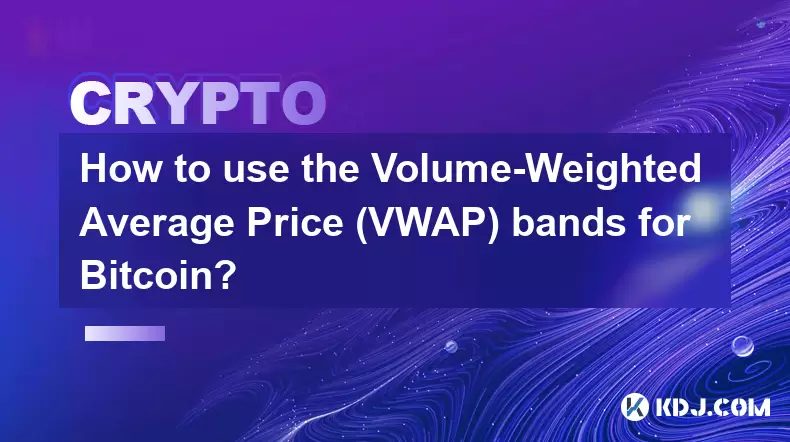-
 Bitcoin
Bitcoin $108,192.4840
-0.79% -
 Ethereum
Ethereum $2,520.0996
-1.16% -
 Tether USDt
Tether USDt $1.0002
-0.01% -
 XRP
XRP $2.2216
-0.44% -
 BNB
BNB $655.3498
-0.46% -
 Solana
Solana $148.0291
-1.58% -
 USDC
USDC $0.9999
0.00% -
 TRON
TRON $0.2831
-1.37% -
 Dogecoin
Dogecoin $0.1642
-1.68% -
 Cardano
Cardano $0.5748
-1.24% -
 Hyperliquid
Hyperliquid $39.4087
1.28% -
 Sui
Sui $2.9157
-0.36% -
 Bitcoin Cash
Bitcoin Cash $483.5621
0.38% -
 Chainlink
Chainlink $13.2143
-1.13% -
 UNUS SED LEO
UNUS SED LEO $9.0623
0.20% -
 Avalanche
Avalanche $17.8302
-1.40% -
 Stellar
Stellar $0.2374
-1.09% -
 Toncoin
Toncoin $2.7496
-2.20% -
 Shiba Inu
Shiba Inu $0.0...01147
-0.83% -
 Hedera
Hedera $0.1557
0.09% -
 Litecoin
Litecoin $86.3775
-1.75% -
 Monero
Monero $312.5454
-2.83% -
 Polkadot
Polkadot $3.3663
-2.25% -
 Dai
Dai $1.0000
0.01% -
 Ethena USDe
Ethena USDe $1.0001
0.00% -
 Bitget Token
Bitget Token $4.4127
-1.15% -
 Uniswap
Uniswap $6.9598
-5.53% -
 Pepe
Pepe $0.0...09815
0.25% -
 Aave
Aave $270.5779
0.33% -
 Pi
Pi $0.4678
-3.14%
What is Bitcoin trading slippage? How to reduce slippage losses?
Bitcoin trading slippage, the difference between expected and actual trade prices, can erode profits; traders use limit orders and trade during high liquidity to mitigate it.
Apr 29, 2025 at 07:35 pm

Bitcoin trading slippage refers to the difference between the expected price of a trade and the price at which the trade is actually executed. This phenomenon is particularly prevalent in fast-moving markets or during times of high volatility. Slippage can occur on both buy and sell orders and can significantly impact the profitability of trading strategies. Understanding and managing slippage is crucial for traders looking to optimize their performance in the cryptocurrency markets.
Causes of Bitcoin Trading Slippage
Slippage in Bitcoin trading can be attributed to several factors. One primary cause is market volatility. During periods of high volatility, the price of Bitcoin can fluctuate rapidly, making it difficult for orders to be filled at the intended price. Another factor is liquidity. In markets with low liquidity, there may not be enough buyers or sellers at a given price level to fill an order, leading to slippage. Additionally, order size plays a role; large orders are more likely to experience slippage because they require more market depth to be filled completely.
Impact of Slippage on Trading
The impact of slippage on Bitcoin trading can be significant. For traders, slippage can erode potential profits or exacerbate losses. For instance, if a trader places a buy order at $30,000 but the order is filled at $30,100 due to slippage, the trader immediately faces a loss of $100 per Bitcoin. This can be particularly detrimental for high-frequency traders who rely on small margins for profitability. Therefore, understanding and managing slippage is essential for maintaining the effectiveness of trading strategies.
Strategies to Reduce Slippage Losses
To reduce slippage losses, traders can employ several strategies. One effective method is using limit orders. Unlike market orders, which are executed at the best available price, limit orders allow traders to specify the maximum price they are willing to pay or the minimum price they are willing to accept. This can help prevent slippage by ensuring that trades are only executed within a predefined price range.
Another strategy is trading during high liquidity periods. Bitcoin markets tend to be more liquid during certain times of the day, such as when major financial markets are open. Trading during these periods can reduce the likelihood of slippage because there are more buyers and sellers available to fill orders at desired price levels.
Additionally, splitting large orders into smaller ones can help minimize slippage. By breaking a large order into smaller chunks, traders can reduce the impact on the market and increase the chances of filling each part of the order at a favorable price. This approach requires careful monitoring and execution but can be effective in reducing slippage.
Tools and Technologies to Mitigate Slippage
Several tools and technologies are available to help traders mitigate slippage. One such tool is algorithmic trading software, which can automatically execute trades based on predefined criteria. These algorithms can be programmed to use limit orders and split large orders, reducing the risk of slippage. Additionally, trading platforms with advanced order types, such as iceberg orders or time-weighted average price (TWAP) orders, can help manage slippage by allowing traders to execute large orders without significantly impacting the market.
Another useful technology is real-time market data feeds. Access to up-to-the-minute price information can help traders make more informed decisions and adjust their orders accordingly. This can be particularly beneficial in volatile markets where prices can change rapidly.
Monitoring and Adjusting for Slippage
Monitoring and adjusting for slippage is an ongoing process that requires attention and adaptability. Traders should regularly review their trading performance and analyze instances of slippage to identify patterns and potential areas for improvement. Keeping detailed records of trades, including the intended and actual execution prices, can provide valuable insights into the effectiveness of different strategies.
Adjusting trading strategies based on these insights can help minimize future slippage. For example, if a trader notices that slippage tends to occur during specific times of the day, they can adjust their trading schedule to avoid those periods. Similarly, if certain order types or sizes consistently result in higher slippage, traders can modify their approach to better align with market conditions.
FAQs
Q: How does slippage affect different types of traders?
A: Slippage can have varying impacts on different types of traders. For day traders and scalpers, who rely on small price movements for profits, even minor slippage can significantly affect their bottom line. For swing traders and long-term investors, the impact of slippage may be less pronounced, but it can still add up over time, especially when trading large volumes.
Q: Can slippage be completely eliminated?
A: No, slippage cannot be completely eliminated due to the inherent nature of financial markets. However, by using the strategies and tools discussed, traders can significantly reduce the occurrence and impact of slippage.
Q: How does the choice of trading platform affect slippage?
A: The choice of trading platform can have a notable impact on slippage. Platforms with higher liquidity and faster execution speeds tend to result in less slippage. Additionally, platforms that offer advanced order types and algorithmic trading capabilities can help traders better manage slippage.
Q: Are there any specific market conditions that increase the risk of slippage?
A: Yes, certain market conditions can increase the risk of slippage. These include periods of high volatility, low liquidity, and times of significant news announcements or economic events. Traders should be particularly cautious during these times and adjust their strategies accordingly.
Disclaimer:info@kdj.com
The information provided is not trading advice. kdj.com does not assume any responsibility for any investments made based on the information provided in this article. Cryptocurrencies are highly volatile and it is highly recommended that you invest with caution after thorough research!
If you believe that the content used on this website infringes your copyright, please contact us immediately (info@kdj.com) and we will delete it promptly.
- Bitcoin's Pattern Break: Are HODLers the Key to the Next Surge?
- 2025-07-04 18:50:12
- Bitcoin Price, Trump's Bill, and the $150K Dream: A NYC Take
- 2025-07-04 19:50:12
- Ethereum, LILPEPE, and the July Bounce: Will Pepe Steal ETH's Thunder?
- 2025-07-04 19:10:12
- Binance Institutional Loans: Unlocking 4x Leverage and Zero Interest for Whales
- 2025-07-04 19:15:12
- Bitcoin Bull Run: Analysts Eye Peak in Late 2025?
- 2025-07-04 19:20:13
- Pepe Indicators, Bullish Forecast: Can the Meme Coin Rally?
- 2025-07-04 19:25:12
Related knowledge

What is the Woodies CCI indicator and can it be used for Bitcoin?
Jul 04,2025 at 05:14pm
Understanding the Woodies CCI IndicatorThe Woodies CCI indicator is a variation of the traditional Commodity Channel Index (CCI), which was originally developed by Donald Lambert. The standard CCI measures the current price level relative to an average price over a given period, typically 14. However, the Woodies version modifies this calculation to mak...

What does a bearish cross on the Stochastic RSI mean for Bitcoin?
Jul 05,2025 at 07:18pm
Understanding the Stochastic RSI IndicatorThe Stochastic RSI (Relative Strength Index) is a momentum oscillator used in technical analysis to identify overbought or oversold conditions in an asset's price. It combines two well-known indicators — the RSI and the Stochastic Oscillator — to provide more nuanced signals than either could alone. The Stochast...

How to use the Volume-Weighted Average Price (VWAP) bands for Bitcoin?
Jul 04,2025 at 04:28pm
Understanding the Basics of VWAP BandsThe Volume-Weighted Average Price (VWAP) is a key metric used in trading to determine the average price at which an asset, such as Bitcoin, has traded throughout the day. It takes into account both volume and price, making it more reliable than a simple moving average. VWAP bands are essentially standard deviation c...

How to code a simple MACD crossover strategy for Bitcoin in Pine Script?
Jul 05,2025 at 07:18pm
Understanding the MACD Indicator in Cryptocurrency TradingThe Moving Average Convergence Divergence (MACD) is a popular technical indicator used across various financial markets, including cryptocurrency. It helps traders identify potential trend reversals and momentum shifts by comparing two moving averages. In the context of Bitcoin trading, the MACD ...

How to use indicators to differentiate a Bitcoin pullback from a reversal?
Jul 05,2025 at 07:17pm
Understanding Bitcoin Pullbacks and ReversalsIn the volatile world of Bitcoin trading, distinguishing between a pullback and a reversal is crucial for making informed decisions. A pullback refers to a temporary decline in price within an ongoing uptrend, while a reversal indicates a fundamental shift in market sentiment, potentially leading to a downtre...

How to combine RSI and MACD for Bitcoin signals?
Jul 05,2025 at 07:17pm
Understanding RSI and MACD Indicators in Bitcoin TradingThe Relative Strength Index (RSI) and Moving Average Convergence Divergence (MACD) are two of the most widely used technical indicators in cryptocurrency trading, particularly for analyzing Bitcoin price movements. RSI is a momentum oscillator that measures the speed and change of price movements, ...

What is the Woodies CCI indicator and can it be used for Bitcoin?
Jul 04,2025 at 05:14pm
Understanding the Woodies CCI IndicatorThe Woodies CCI indicator is a variation of the traditional Commodity Channel Index (CCI), which was originally developed by Donald Lambert. The standard CCI measures the current price level relative to an average price over a given period, typically 14. However, the Woodies version modifies this calculation to mak...

What does a bearish cross on the Stochastic RSI mean for Bitcoin?
Jul 05,2025 at 07:18pm
Understanding the Stochastic RSI IndicatorThe Stochastic RSI (Relative Strength Index) is a momentum oscillator used in technical analysis to identify overbought or oversold conditions in an asset's price. It combines two well-known indicators — the RSI and the Stochastic Oscillator — to provide more nuanced signals than either could alone. The Stochast...

How to use the Volume-Weighted Average Price (VWAP) bands for Bitcoin?
Jul 04,2025 at 04:28pm
Understanding the Basics of VWAP BandsThe Volume-Weighted Average Price (VWAP) is a key metric used in trading to determine the average price at which an asset, such as Bitcoin, has traded throughout the day. It takes into account both volume and price, making it more reliable than a simple moving average. VWAP bands are essentially standard deviation c...

How to code a simple MACD crossover strategy for Bitcoin in Pine Script?
Jul 05,2025 at 07:18pm
Understanding the MACD Indicator in Cryptocurrency TradingThe Moving Average Convergence Divergence (MACD) is a popular technical indicator used across various financial markets, including cryptocurrency. It helps traders identify potential trend reversals and momentum shifts by comparing two moving averages. In the context of Bitcoin trading, the MACD ...

How to use indicators to differentiate a Bitcoin pullback from a reversal?
Jul 05,2025 at 07:17pm
Understanding Bitcoin Pullbacks and ReversalsIn the volatile world of Bitcoin trading, distinguishing between a pullback and a reversal is crucial for making informed decisions. A pullback refers to a temporary decline in price within an ongoing uptrend, while a reversal indicates a fundamental shift in market sentiment, potentially leading to a downtre...

How to combine RSI and MACD for Bitcoin signals?
Jul 05,2025 at 07:17pm
Understanding RSI and MACD Indicators in Bitcoin TradingThe Relative Strength Index (RSI) and Moving Average Convergence Divergence (MACD) are two of the most widely used technical indicators in cryptocurrency trading, particularly for analyzing Bitcoin price movements. RSI is a momentum oscillator that measures the speed and change of price movements, ...
See all articles

























































































